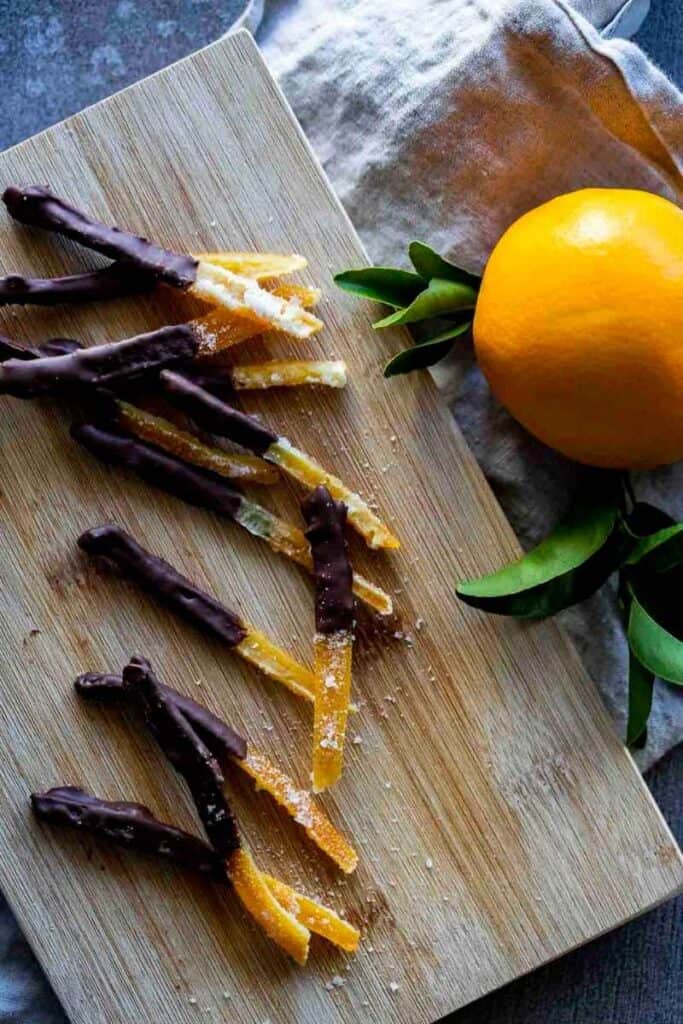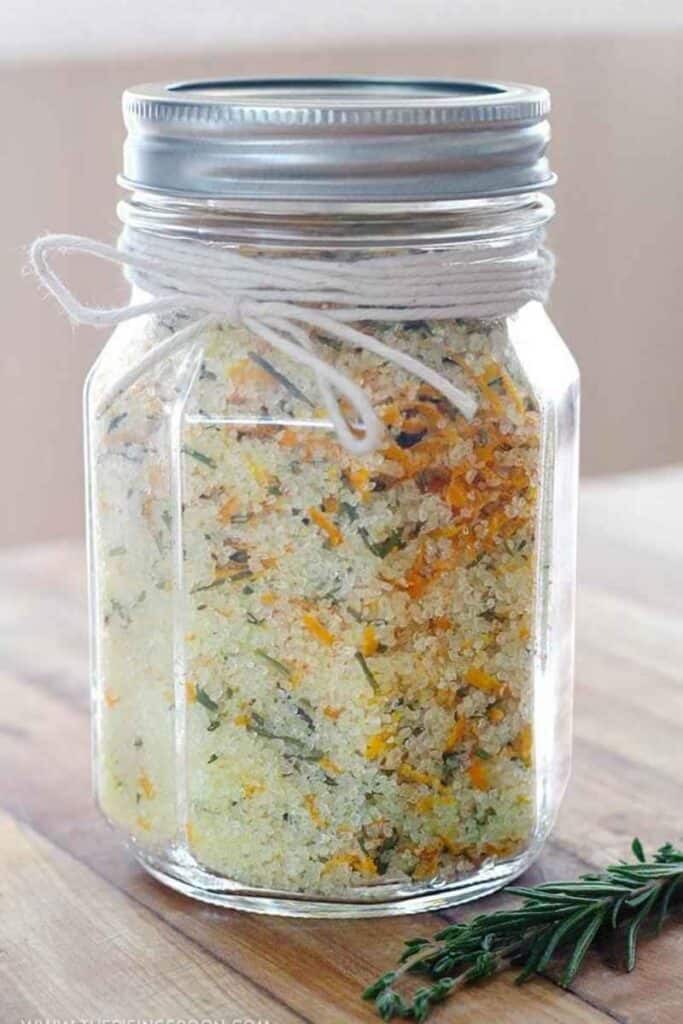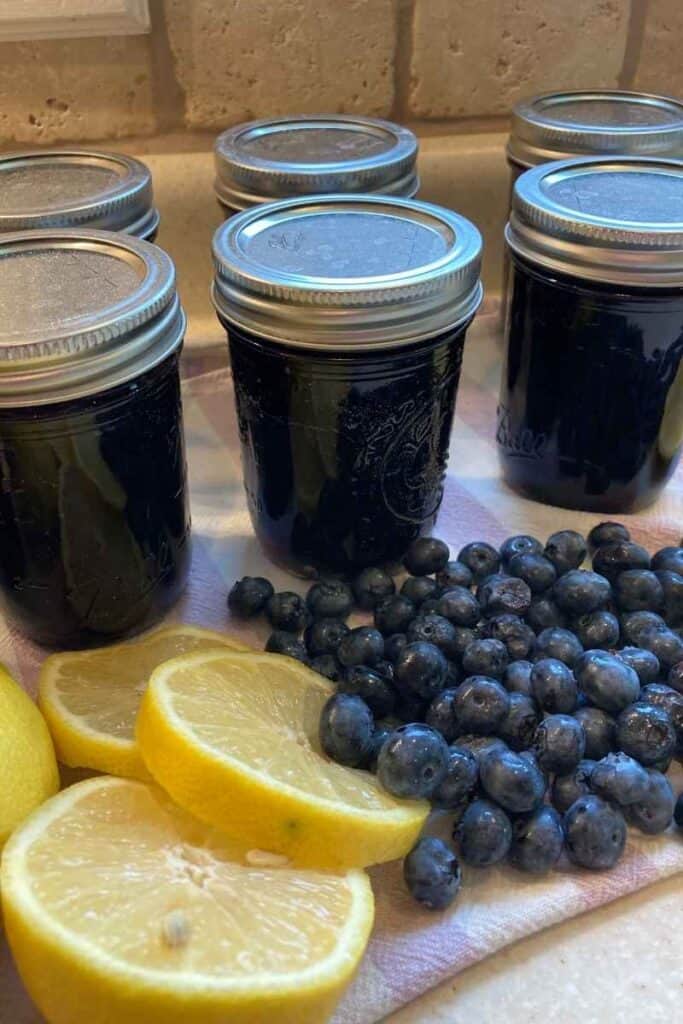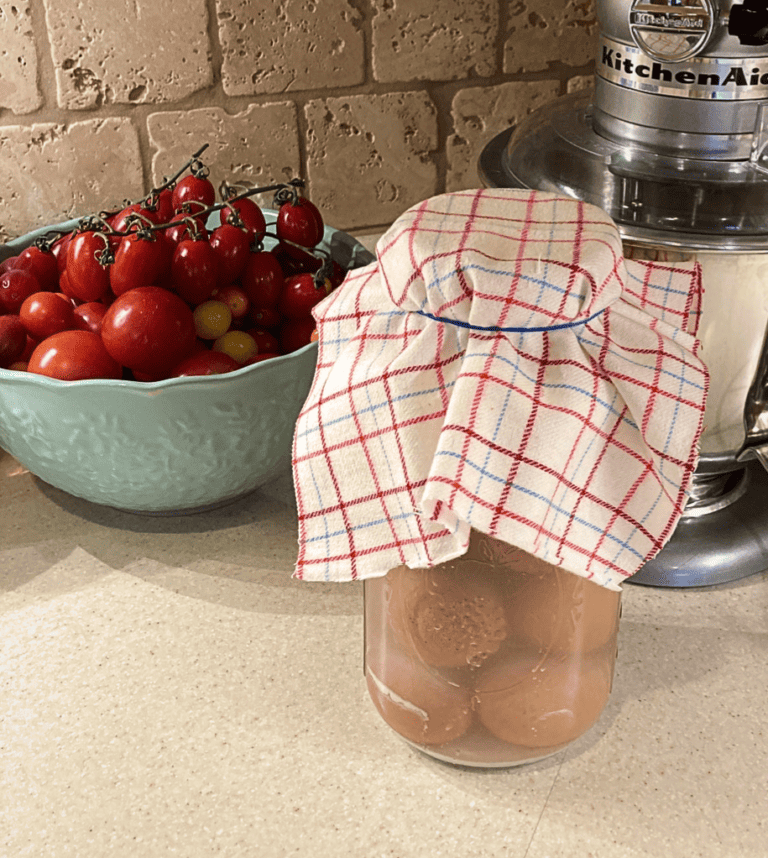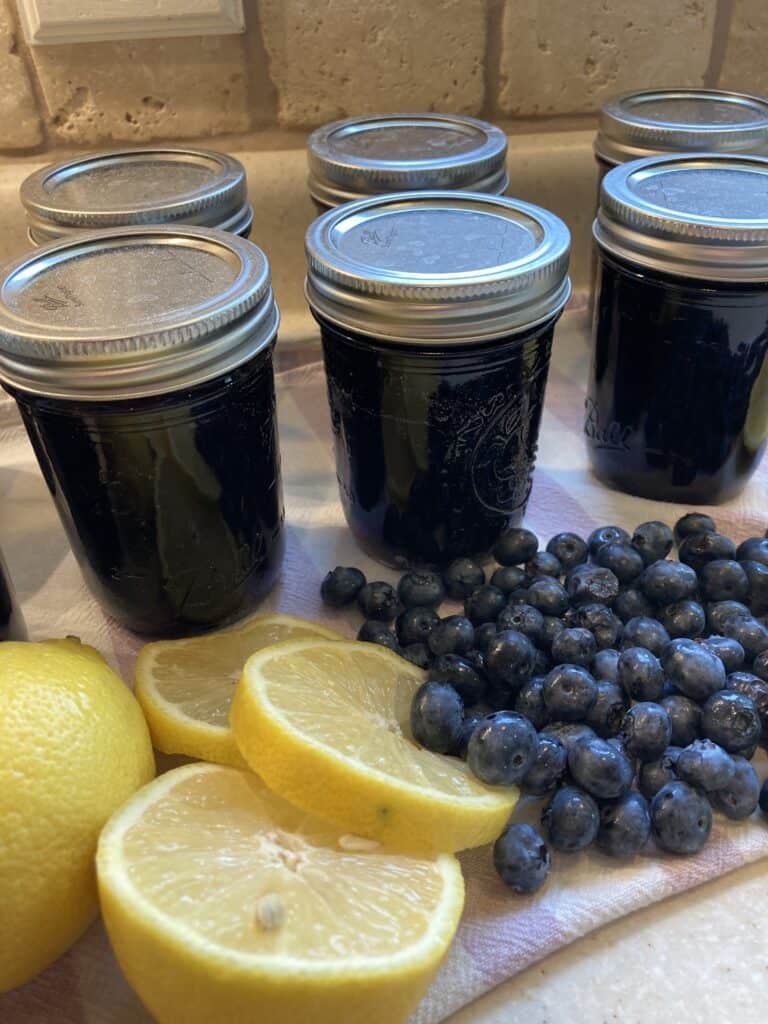This site contains affiliate links to products. We may receive a commission for purchases made through these links. See the full affiliate and privacy policy disclosures here.
There are many ways to use leftover orange, lemon, and lime peels. Citrus is a great ally, whether you are working towards a zero-waste kitchen, moving towards natural cleaners, or looking for natural beauty care. Orange, lemon, and lime- including the refuse you usually pitch in the trash, can also be used in unique ways around the house and homestead. Orange, lemon, and lime will help keep most pests away.

This site contains affiliate links to products. We may receive a commission for purchases made through these links. See the full affiliate and privacy policy disclosures here.
In the Kitchen

If you are new to cooking with citrus peels in the kitchen, here are a few things to keep in mind:
- Did you know the rinds actually pack a better nutrition punch than the interior flesh of the citrus? Citrus peels contain high levels of limonene which has antioxidant, anti-inflammatory, and anti-aging properties. The peels also contain vitamin C, potassium, and calcium.
- Use organic when possible. No one wants a side of pesticides with their dinner.
- The inner part of the peel is called the pith. The pith tastes bitter, but no fear! You aren’t going for the pith when cooking with citrus. A good zester or peeler can prevent most pith from ending up on your peelings. It is often easiest to zest directly over whatever the recipe is being prepared in. A piece of parchment paper or wax paper also works great to catch the zest. When peeling, it is often easiest for most recipes to peel in strips.
1. Flavor Your Water
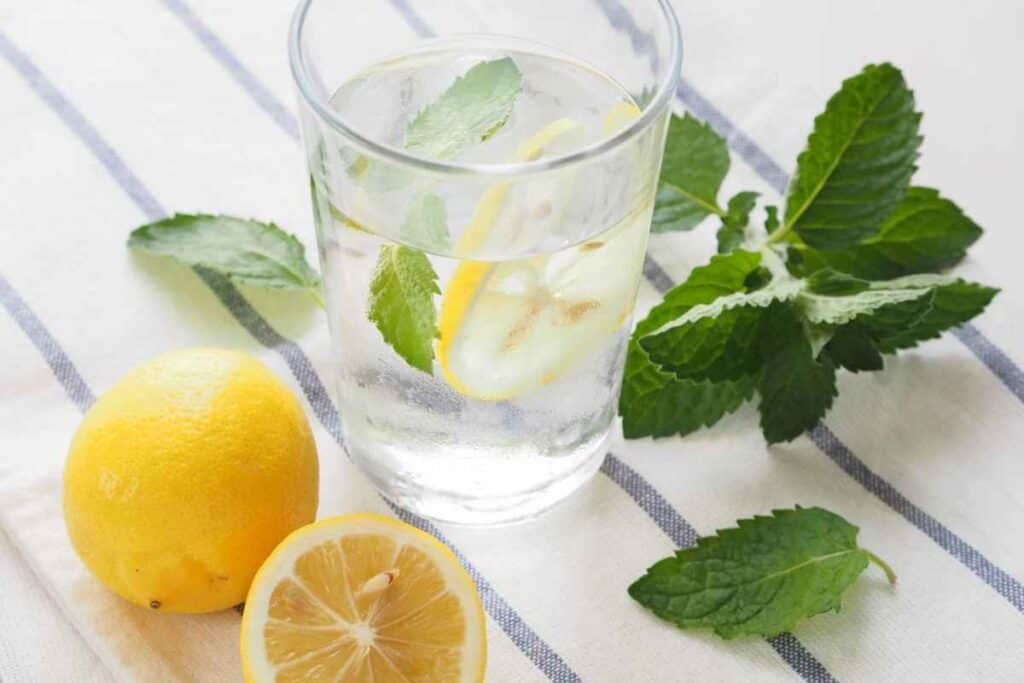
I don’t know about you, but I get bored with plain water. There are two ways to add a hint of citrus to ho-hum water. You can drop the citrus directly into your water or place a few slices of peel in ice cube trays, cover them with water, and freeze them to make ice-cold flavored water on a later day. You can also freeze them without the ice cube tray as whole peels. Try adding different types of citrus, mint, or a sprig of rosemary.
2. Make Orange (or Lemon, Lime, Grapefruit, etc) Extract
If you have never made extracts, you are in for a treat! It is incredible how crazy simple and hands-off it is to create a citrus extract. You probably won’t ever buy the watered-down version with “natural” flavoring at the store again.
To make an extract, you will need the following:
- peels from one or more citrus fruits
- vodka
- a jar with a lid that has an excellent tight seal
Then:
- Add the peels to the jar and cover them with vodka.
- Shake well.
- After that, place in a cool dark place (a cabinet is a perfect spot for this) and allow to steep for 6 weeks or longer, occasionally shaking gently during that time.
- After 6 weeks, your extract is ready to use.
Orange pairs really well with chocolate, so consider substituting orange extract for your vanilla extract next time you bake a chocolate cake. If you want a more potent extract, you can use more orange peels, allow it to steep for a more extended period, or both.
3. Make Peels the Rock Star of the Recipe
Make fancy-looking Chocolate Covered Candied Orange Peels. These add a unique, sweet contrast to any charcuterie board.
Want a quick way to amp up the flavor of baked fish, chicken, or potatoes? Try Rosemary, Orange & Thyme Flavored Herb Salt sprinkled over the top.
Try this “Tastes Like Summer” Blueberry & Lemon Jam recipe. It’s a little taste of summer when spread on pancakes in the cold winter months. It also makes for a great ice cream topping!
4. Make a Seasonal Potpourri Mix
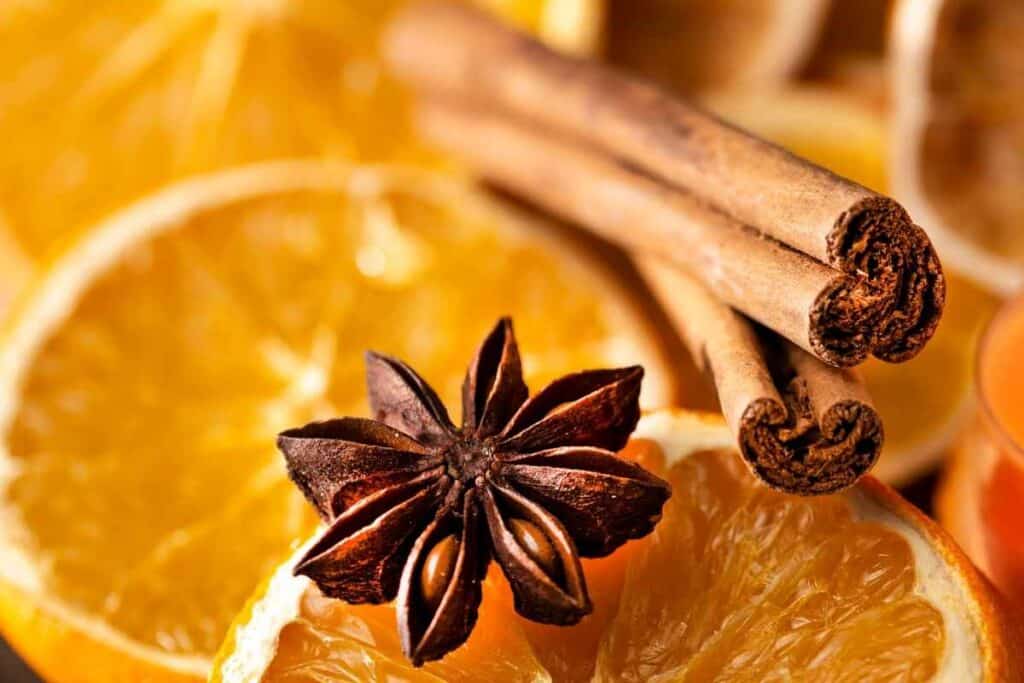
Mix citrus peels with cinnamon sticks, cloves, ginger, nutmeg, cranberries, or any combination of these spices. If Christmas is near, add some fresh pine to the mix. Then simmer the mixture on the stovetop or in a crockpot with the lid off.
My personal favorite is to let this simmer away on the wood stove. It adds something special, uses energy already being used, and releases some moisture into the air. Just be vigilant in keeping an eye on any kids or pets in the area.
5. Up the Wow Factor When Plating Recipes
It has been said that we eat with our eyes first. Enhance that experience by serving your next side or salad in orange “bowls.”
Orange, lemon, lime, and grapefruit peels can also add a pop of color to a dish. Peel the citrus in a circular fashion to create a garnish that can take a meal from boring to the next level.
6. Dry or Dehydrate It for Future Use
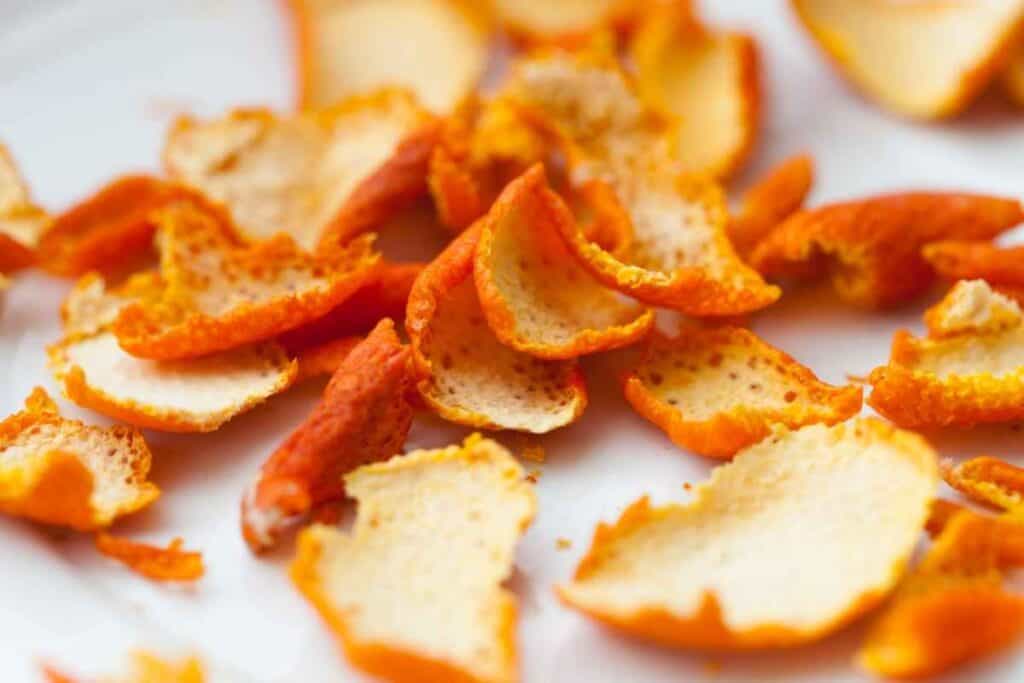
Every once in a while, I only need the zest from the fruit rather than the whole fruit for a recipe. Having dehydrated peels on hand can provide a quick swap out for fresh zest in a recipe saving both time and resources.
Drying orange, lemon, lime, or other citrus peels is a quick and easy process. There are three effortless ways to dehydrate peels.
- Air drying is the simplest way to dry out citrus peels without using any energy, special equipment, or extra resources. Simply lay them on a baking sheet or plate in a single layer and let them dry over the next two or so days. After two days check to see that they are fully dried before transferring to an airtight container like a Mason jar.
- To dehydrate in a dehydrator, arrange the peels in a single layer on the dehydrator sheets. Set your dehydrator to 135 degrees and then check the peels in one hour. Dehydrated peels should be curled and crispy when they are fully dried. Let the peels cool completely. Store in an airtight container. If you are looking for a dehydrator this is the one I personally use.
- Last but not least, dry the citrus peels in the oven. First, cover a baking sheet with a piece of parchment paper. Distribute the peels in a single layer across the parchment-lined baking sheet. Then bake at 300 degrees for around 30 minutes before checking to see if the peels are thoroughly dried. If they aren’t done in 30 minutes, put them back in the oven and keep checking in 5-minute increments.
Peels should be brittle and break easily when completely dried. They shouldn’t be flexible at all. Peels that are not thoroughly dried will likely mold at some point, so ensure they are thoroughly dried before storing.
Depending on how you intend to use your peels, you can put them away whole, break them into smaller pieces (like you would use for zest), or grind the peels into a powder.
7. Enjoy Peels With Your Favorite Tea or Make Homemade Tea

It really is the simple pleasures that can brighten your day. This is one of my favorite ways to use leftover oranges. Adding oranges to a cup of hot tea can make that humble cup feel like something special. It may also help with the mid-day slump. Citrus has been shown to enhance alertness and energy levels, making for a perfect afternoon pick-me-up.
If you need a tea recommendation to pair with orange, my favorite store-bought tea is Constant Comment. It is a sweet and mildly spicy flavored tea that already has some orange in it. Adding fresh sliced orange or dehydrated orange peel gives it an extra oomph!
If you want to make your tea from orange peel, consider this Easy Peasy Creative Ideas recipe.
8. Soften Hardened Brown Sugar
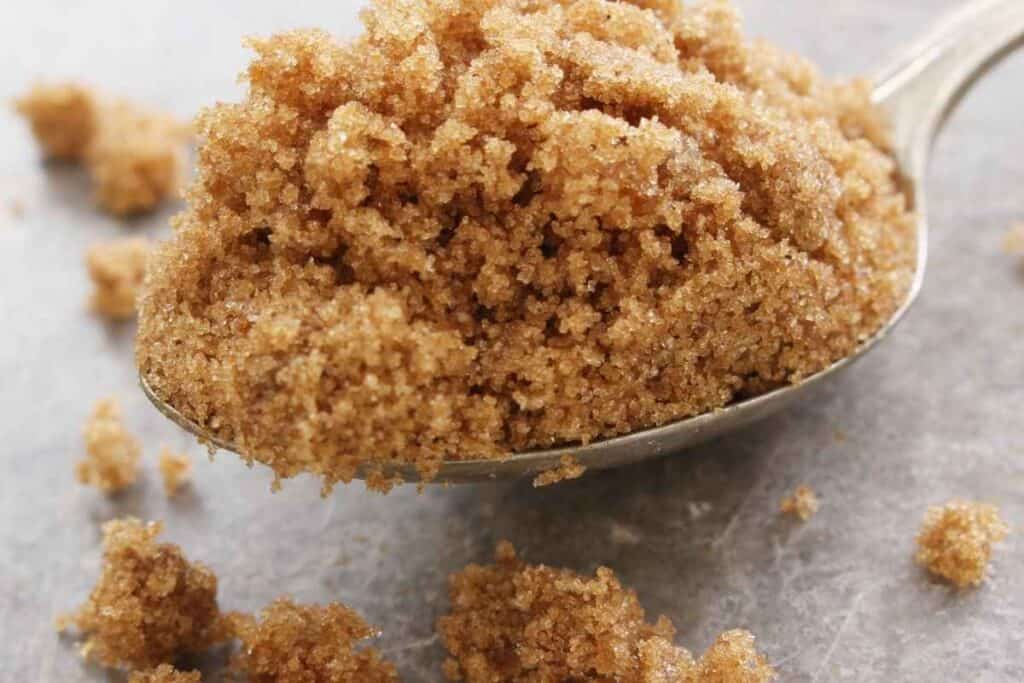
Brown sugar is a finicky thing. It seems to harden into a brick even in the best airtight containers. Next time you have this issue, rinse and dry a fresh citrus peel and drop it right into the container with the brown sugar. After the sugar sits for at least two hours with the peel, it should begin to soften.
9. Make Infused Olive Oil
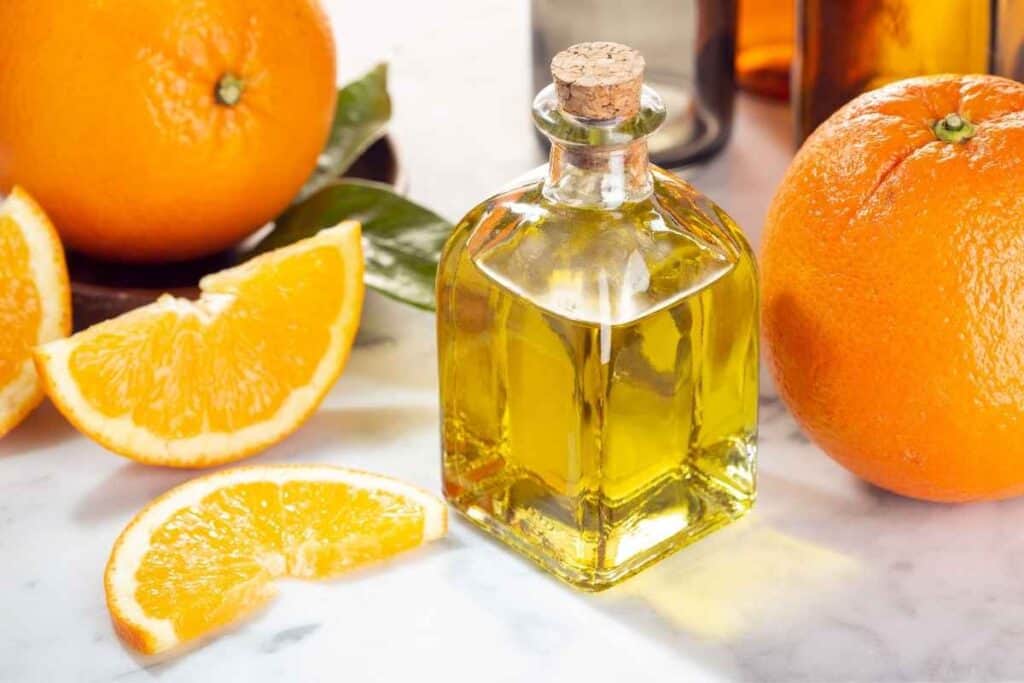
Add about 2 cups of peels to a food processor with 1 cup of olive oil. Run the peels through the processor until they are minced finely. Let sit for a few hours. Then strain through a fine mesh strainer and bottle for later. Orange-infused olive oil is excellent in homemade salad dressings, stir-fry, and swapped for butter in baked goods.
Cleaning
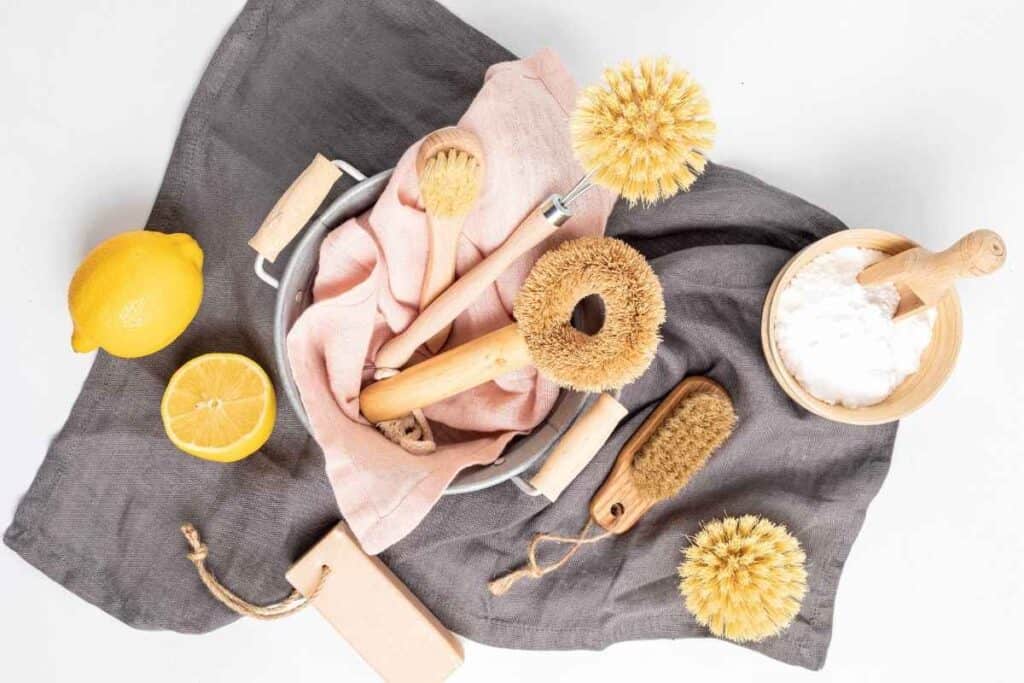
More and more people are turning to natural solutions for everyday problems, including replacing harsh cleaners. Thankfully, because of this trend, science can finally confirm some of what previous generations already knew. There are a wide variety of antibacterial and antimicrobial elements in nature that can be used. Chief among them is- you guessed it- orange, lemon, and lime.
1. Clean Water Spots Off of Stainless Steel
We have a Berkey water filter system and water faucets that are a magnet for stubborn water spots and fingerprint smudges. Stainless steel looks nice when it is well cleaned but when it isn’t, well… rub a citrus peel over dirty or fingerprinted areas to remove them. When you are finished cleaning your stainless…
2. Toss the Peels Into the Garbage Disposal
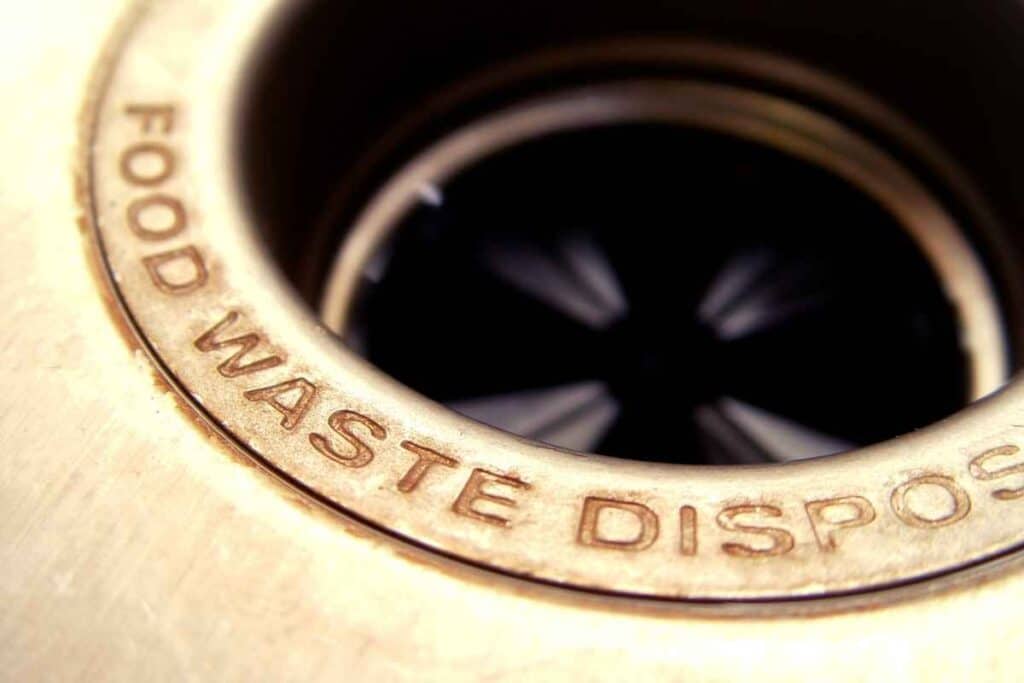
Turn on cool water and toss in extra peels (no more than a cup or so at a time is suggested) for a quick freshen-up. It may take your disposal a few minutes to grind up all the peels completely, so expect this!
For a heavily soiled or neglected garbage disposal, try this-
- Dump 1/2 cup baking soda down the disposal. You may need to give it a little help to get it past the rubber gasket and down into the disposal.
- For this step, you will need to have the sink stopper for your disposal handy. Dump 1 cup of white vinegar down the disposal unit and quickly cover it with the stopper to keep the contents in the disposal instead of in your sink. Yep! This is the same famous “volcano” reaction from the science fair. Keep the stopper on for around 5 minutes or so.
- Then remove the stopper and run cool water down the drain with the disposal running.
- Follow that by adding a handful of fresh peels and a handful of ice cubes down the disposal. Viola! A clean and deodorized disposal!
3. Give the Sink a Quick Scrub with Peels and Salt
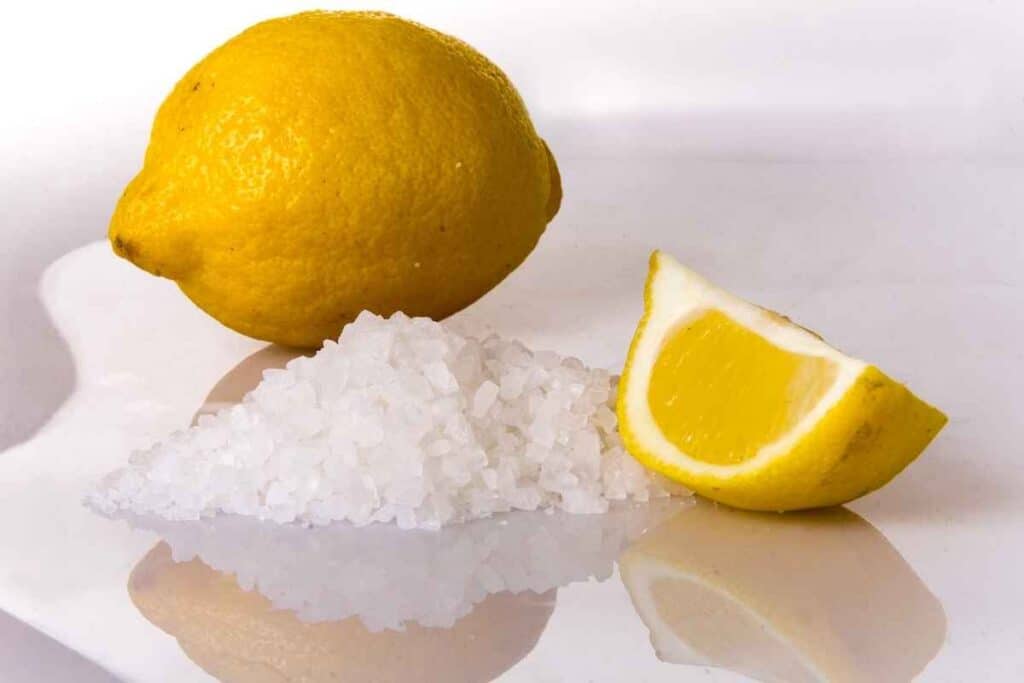
This works better with half of any citrus fruit instead of just the peel, but you CAN still do this using only larger peel pieces. Add a 1/2 tablespoon of salt to the cut side of the citrus. Give the sink a good scrub with the salted side and some elbow grease.
Bonus: The citrus and salt combination can be used elsewhere as a cleaner. Citrus is an excellent degreaser. One of my favorites is to clean cutting boards. Get creative with this cleaning method but remember to make sure the surface you are cleaning can stand up to the abrasiveness of the salt and acidity of the citrus.
4. Make Cleaning the Microwave a Cinch

Have you ever found yourself scrubbing baked-on microwave splatters from the microwave that would give concrete a run for its money? Yeah, me too. Cherubs may have started singing the first time I tried the mug and lemon method. Ok. That’s a stretch, but it really has saved me hours of scrubbing the inside of a microwave over the years.
First, place some orange or lemon peels inside a mug. Adding a stick of cinnamon and some cloves will make your house smell AH-mazing! Then fill the cup about halfway with water. Place the mug inside the microwave. Microwave for 4-5 minutes.
Then VERY CAREFULLY (and with a really good hot pad), remove the mug from the microwave, being especially careful not to spill the hot liquid. Set the water in a safe place to cool before dumping. Everything should be nice and loosened up in the microwave at this point. Simply wipe it out with a damp dishrag.
5. Homemade All Purpose Cleaner
Toss peels into a glass jar with a non-metallic lid. Next, cover the peels with vinegar at least halfway up the jar. Then place the vinegar and peels in a cool, dark place for 2-3 weeks, shaking it every few days to help mix it in the solution. Then, strain the vinegar and peel mixture through a fine mesh strainer or cheesecloth. You will want to transfer this to a glass spray cleaning bottle. It may be easiest to put a funnel under the cheesecloth and direct it straight into the jar it’s going into. Fewer dishes to wash in the process. Yes please!
If you prefer to stretch your cleaning vinegar, you can add an equal amount of water to your strained solution. I choose not to dilute mine.
You can use this spray on glass, countertops, and other hard surfaces, which can even be lightly applied to most fabrics. Do NOT use this on stone, granite, marble, electronics, wood floors, wooden furniture, or anything with a wax finish. NEVER mix vinegar with bleach since it can create toxic fumes.
6. Deodorize Your Fridge (Or Any Other Stinky Spaces)
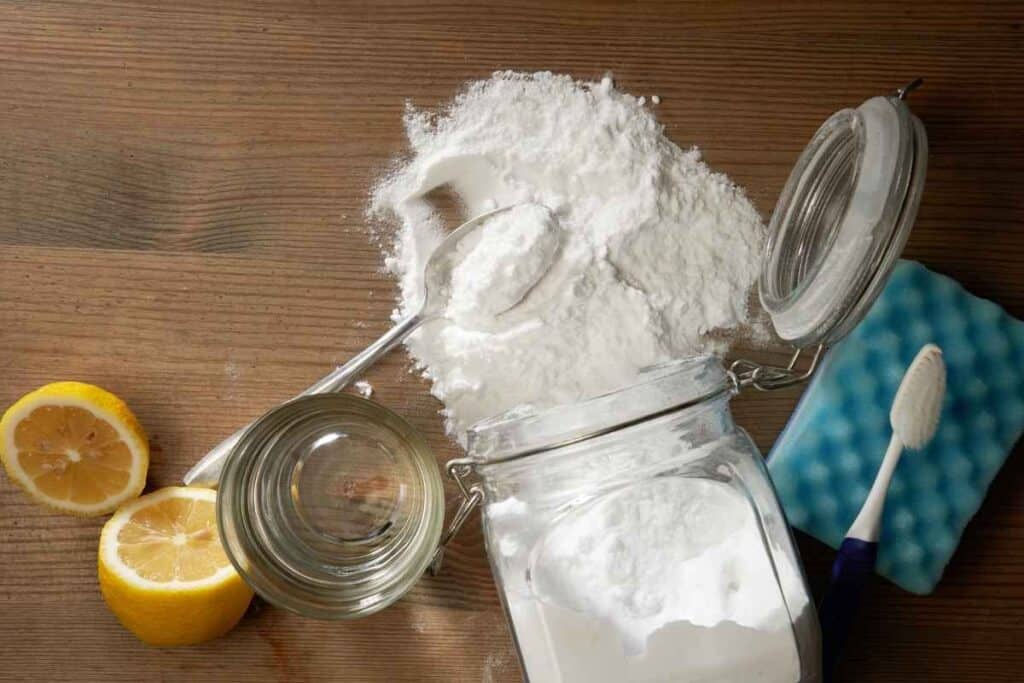
Place a small box of baking soda in the back of the fridge, along with a few lemon or orange peels. This can also be used in musty places, near stinky shoes in a closet, or in damp areas like basements. Just remember to change it out every few weeks!
Some people also use this in the bottom of their trash cans to help keep garbage smells at bay.
For spaces like closets or lockers, try filling tea bags with citrus peels and hanging them in pantyhose or old clean onion sacks.
Natural Beauty Care
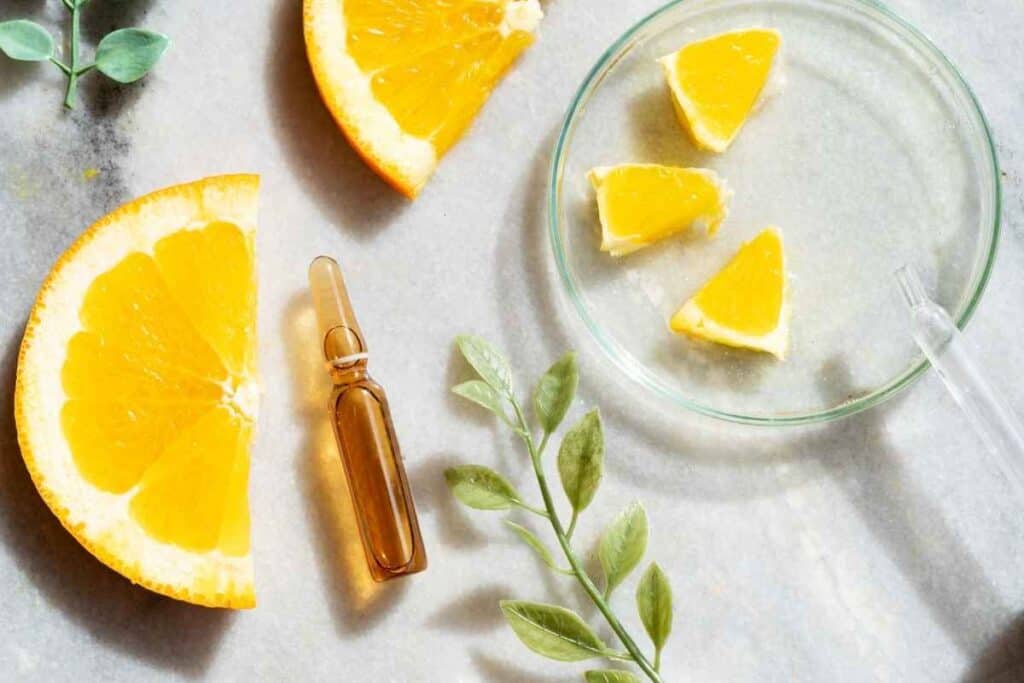
Citrus and lemon, in particular, have been a part of beauty treatments for ages. Is it any wonder? Citrus has antioxidant, antimicrobial, anti-inflammatory, and anti-fungal properties. It also contains natural alpha-hydroxy-acid (AHA), which is often added to store-bought formulas for its ability to smooth fine lines and wrinkles, clear blocked pores, and even skin tone and texture. These properties make citrus an excellent natural exfoliant.
Is there really any reason to buy expensive Vitamin C serums? I don’t think so. Since I’m not a physician or dermatologist, please consult with one. Most complications can be avoided by doing 2 things if you do decide to incorporate citrus into your beauty routine-
- When using citrus on your skin stay out of direct sunlight for a few hours afterwards. Citrus increases your sensitivity to the sun.
- Use small amounts until you know how your skin will respond to citrus. You can have an allergy to anything at all. Even all-natural ingredients. So start small.
1. Lighten Dark Spots on Skin
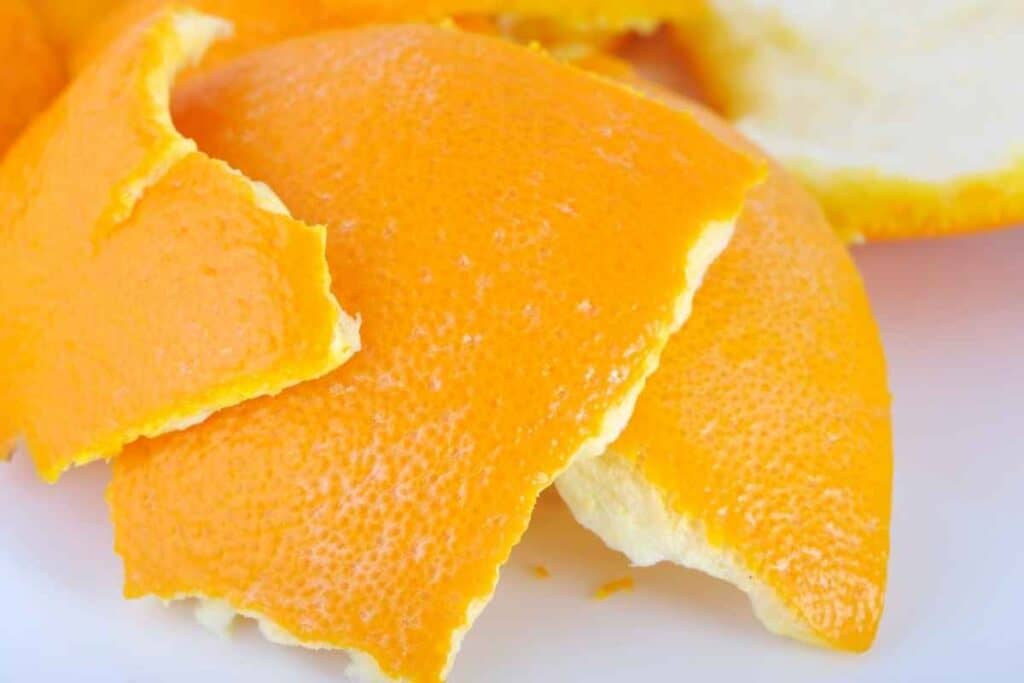
This is basically a mild “bleach” for dark spots. This also works for hair. Start out with just a few minutes of letting a lemon or orange peel sit against your skin. Gradually increase the time by a few minutes each evening until you reach 30 minutes maximum. Lightening dark patches usually takes 2-3 weeks to really see any results but some people have reported that it can take up to 5-6 weeks. Still for something so inexpensive, natural, and readily available, it is well worth a try. Discontinue use if skin irritation occurs.
2. Body Scrubs
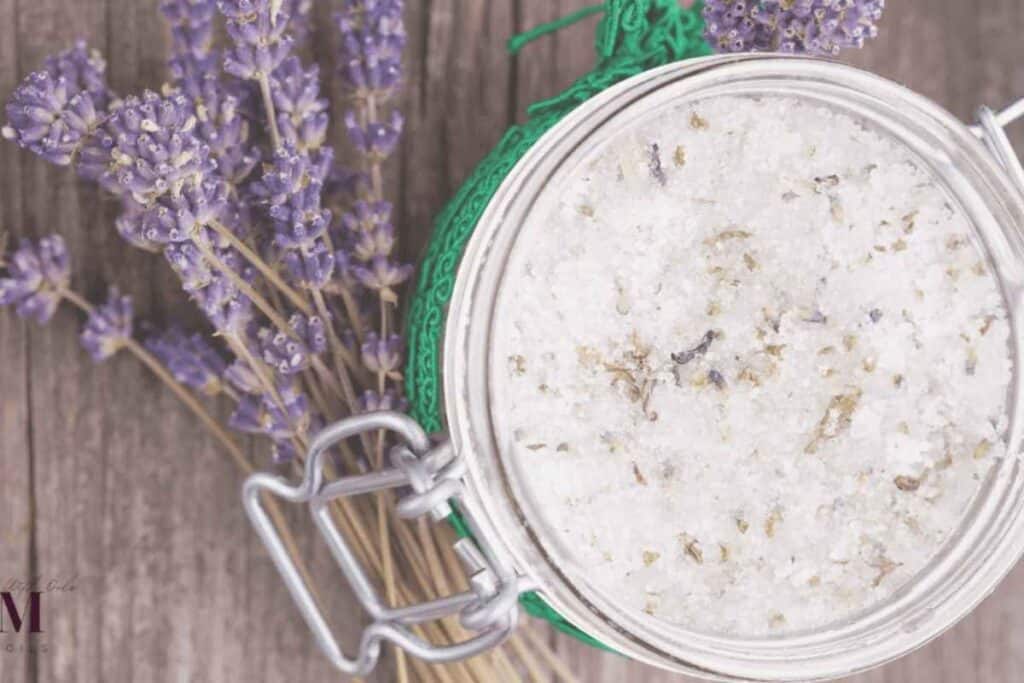
The citric acid in lemons and oranges is a natural exfoliant. You can mix it with sugar or salt to make a scrub.
Check out this post from Dee at shemamswithoils.com. She has an entire free ebook on making scrubs with essential oils.
Tired and dirt caked hands from gardening? Try this recipe for Thyme and Lemon Garden Hand Scrub from Julia over at afarmtokeep.com.
You could easily add citrus zest to this Homemade Sugar Scrub recipe from tulipsandtwill.com.
3. Natural Anti-inflammatory
Multiple substances in citrus, including limonene, have shown promising anti-inflammatory activity. Try turning to oranges or lemons next time you are suffering with minor, localized inflammation like swelling or an insect bite. Simply add a cooled citrus peel to the area of inflammation for 15-30 minutes.
4. Bath Soak

Soaking in a warm bath with orange slices for 20-30 minutes can soften and gently exfoliate your skin. The energy boost from the citrus scent is an added bonus!
On the Home and Homestead
Recipes, cleaning, and beauty care aren’t the only ways to use leftover orange or other citrus. They are also useful in applications around the home and homestead such as pest control, gardening, and chicken care.
1. Repel Flies (Especially Around Chicken Coops)

Flies are the bane of many a homesteader. It seems no matter how well you manage your animals there will be flies because there is inevitably poo. But, we, my friend, have a secret weapon. Citrus! Flies hate it! You may not be able to completely rid yourself of these pests but you can certainly deter them from setting up shop.
Try leaving lemon, orange, or lime peels around the coop, especially near the entrances.
Speaking of chickens and coops…
2. Coop Cleaning Spray
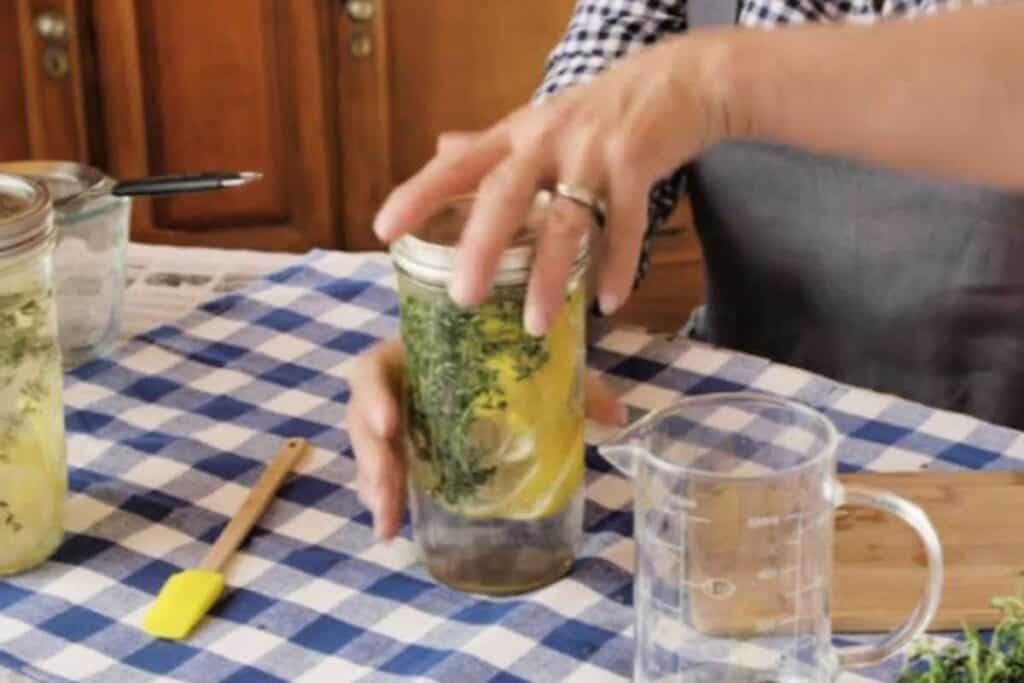
Keeping the coop clean in the first place helps with controlling flies, as well as keeping your flock healthy. Lisa Steele from Fresh Eggs Daily has a great recipe for homemade Lemon Thyme Coop Cleaning Spray.
3. Acidify Your Soil
To acidify your soil:
- Dry lemon, orange, or lime peels.
- Grind well dried peels in a food processor until they are a fine powder.
- Mix the peels into your soil. As they break down they will acidify your soil.
4. Create an All Natural Bird Feeder
- Halve a piece of citrus fruit.
- Scoop out the insides.
- Next use 2 skewers or small but sturdy twigs to poke holes across the middle to form an X across the middle of the citrus.
- Tie twine to the portion of the skewers or twigs sticking outside the citrus peel.
- Fill the hollowed out citrus with bird seed. Feel free to mix some of the pulp back in or add peanut butter pieces to the bird feed. Just remember to not make the feeder base too heavy since the peel can tear easily.
- Hang the feeder outdoors by the twine.
5. Repel Cats From Outdoor Areas

I love cats. We have 3. But, I don’t love cats using my landscaping as their litter box.
To deter cats from flower beds, gardens, or any other outdoor areas that they like to frequent just sprinkle citrus peels around these areas.
6. Homemade Mosquito Repellent

There are 2 methods for using citrus to fight off these buzzing menaces.
- Rub citrus peels directly on your skin.
- Soak citrus peelings in water for 10-14 days. Strain and transfer to a glass spray bottle. Then spray in areas you will be hanging out in and also on yourself.
7. Seed Start Pots
Use half a hollowed out citrus to start seeds in and then transplant directly in to the ground. Remember that the citrus will change the soil acidity slightly. Some acid loving plants that might be good to try are tomatoes, parsley, nasturtiums, and peppers.
8. Fire Starter

Dried citrus peels make for excellent fire starters! Simply dry and add to your kindling stack.
9. Send Ants Packing

Finding yourself with unwelcome guests frequenting your pantry? Dry some lemon peels and place them all along wherever you see ants-where they are gathering and the paths they walk to get there.
Citrus disrupts ants ability to follow the scent trail they leave behind telling more ants to come, not to mention ants strongly dislike citrus. They most likely will seek out an easier target.
10. Orange Peel Candles
This simple hack for a makeshift candle will leave you feeling like MacGyver.
You will need:
- an orange
- a knife
- olive oil
- grill lighter or long matches
Find the recipe here.
When all else fails…
11. Compost!
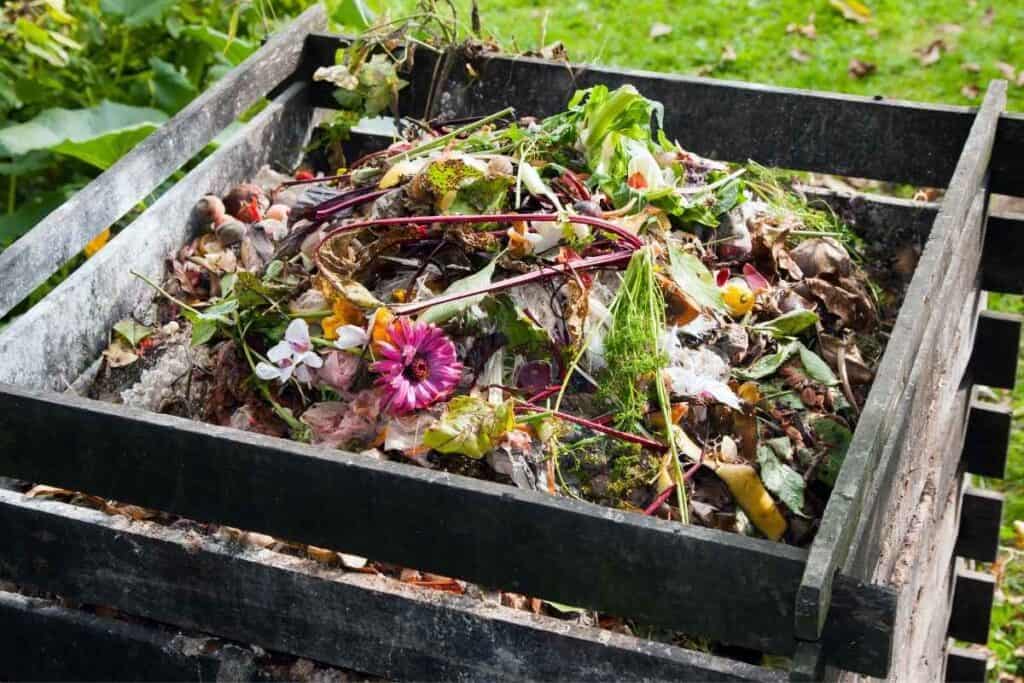
When all else fails, add it to the compost!
Hopefully this post helped you incorporate some new ways to use up leftovers of oranges. lemons, and limes. Most of these hacks and recipes will work with various different types of citrus so feel free to swap out tangerines, grapefruit, tangelos, blood oranges, and the like.


